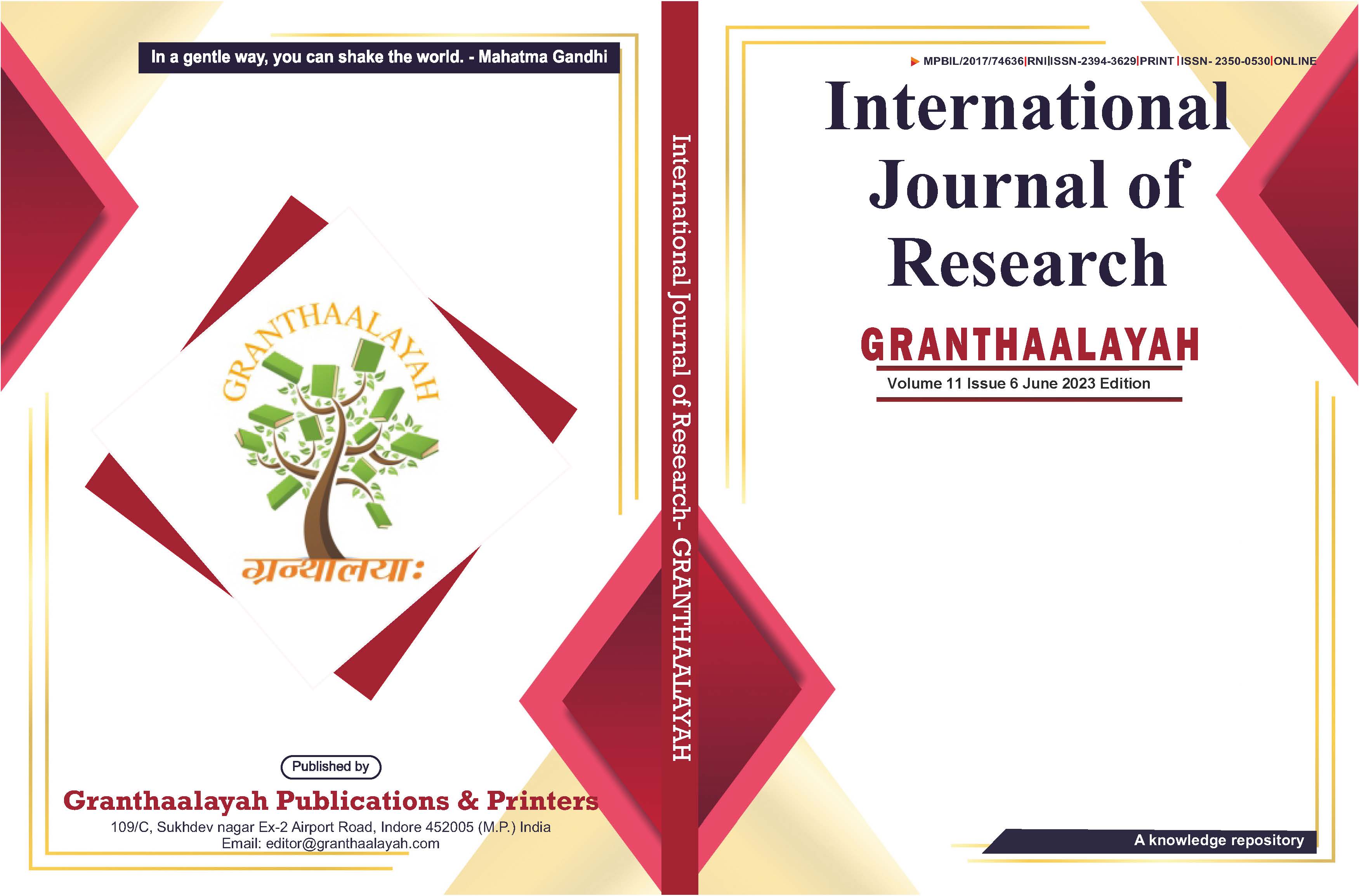MICRIBIOLOGICAL ASSESSMENT OF DRINKING WATER AND PERVASIVENESS OF WATER BORN DISEASES IN DUNGARPUR, RAJASTHAN
DOI:
https://doi.org/10.29121/granthaalayah.v11.i6.2023.5186Keywords:
Drinking Water, Microbial Load, MPN (Most Probable Number), Escherichia Coli, Klebsiella Pneumoniae, IMViC (Indole, methyl-red, Vogus-Proskauer, and citrate utilization), Citrobacter Freundii, ShigellaAbstract [English]
INTRODUCTION: This study assessed E. coli counts in drinking water from different sources and illustrates the high prevalence of gastrointestinal diseases in Dungarpur districts of southern Rajasthan, India.
METHODOLOGY: The microbiological parameters studied were pathogen detection, total coliform count and total viable count. Microbiological analysis of water samples were performed as described in Standard Methods for the Examination of Water and Wastewater (APHA - AWWA, 2005 and Chhabra, 2008). Total coliform count performed by the Most Probable Number (MPN) method, which is commonly used as an indicator of potability of water. Presence of the bacteria from Enterobacteriacae family was confirmed using IMViC test. The data of Indoor and Outdoor patients for such disease were collected.
RESULT AND DISCUSSION: Seasonal fluctuation in coliform counts was found to be prominent and varied from over 200 MPN/ 100 ml in winter to more than 1600 (over the measurable limit) in rainy season in three water bodies. Escherichia coli counts ranged from 17 to 500 MPN/100 ml for all the sampled sites. E. coli and Total coliform were highest in rainy season. Results of IMViC test indicates that in rainy season except for Margia Dam all the water bodies were laden with all five categories of enteric bacteria namely E. coli, Shigella, Citrobacter and Klebsiella/ Enterobacter. The contamination is significantly higher during the wet season compared to dry season, due to WBD patients does exhibit a trend that in late summer and rainy month’s incidence of the disease symptoms intensifies.
CONCLUSION: Dungarpur district was analyzed and same pattern of seasonal variation in microbial counts of water samples and similar hospital data trend was observed. So, somehow the microbial contamination of surface water and run-off reaches the ground-water table. Therefore, hospital data confirms that the source of drinking water plays a strong, positive and significant association with waterborne diseases.
Downloads
References
APHA, AWWA, WEF. (2005). Standard Methods for the Examination of Water and Wastewater, 21st Edition. Washington, DC.
BIS (2012). Indian Standard: Drinking Water- Specification, 2nd revision. IS10500:2012; 1-18.
Cappuccino, James G. and Sherman Natalie (2004). Microbiology- A laboratory Manual. Pearson Education (Singapore) Pvt. Ltd., Indian Branch, 482 FIE Patparganj, New Delhi. pp. 153-156.
Chhabra, V. K. (2008). A manual on Water, Waste Water and Material Analysis, Indian Water Works Association (IWWA), Jaipur.
Latha, N. and Ramachandra Mohan, M. (2013). Microbial Pollution – Total Coliform and Fecal Coliform of Kengeri Lake, Bangalore Region, Karnataka, India. Int. J. of Scientific and Res. Pub. 3(11), 1-3. https://www.researchgate.net/profile/M-Ramachandra-Mohan/publication/258910282_Microbial_pollution-total_coliform_and_fecal_coliform_of_Kengeri_lake_Bangalore_region_Karnataka_India/links/0deec52960c6c6822a000000/Microbial-pollution-total-coliform-and-fecal-coliform-of-Kengeri-lake-Bangalore-region-Karnataka-India.pdf
Moe, C.L. and Rheingans, R.D. (2006). Global Challenges in Water, Sanitation and Health. J Water Health. 4:41-57. https://doi.org/10.2166/wh.2006.0043 DOI: https://doi.org/10.2166/wh.2006.0043
Ouma, S. O., Ngeranwa, J. N., Juma, K. K. and Mburu, D. N. (2016). Seasonal Variation of the Physicochemical and Bacteriological Quality of Water from Five Rural Catchment Areas of Lake Victoria Basin in Kenya. J. Environ. Anal. Chem. 3(1), 1-7. https://www.researchgate.net/publication/301559976_Seasonal_Variation_of_the_Physicochemical_and_Bacteriological_Quality_of_Water_from_Five_Rural_Catchment_Areas_of_Lake_Victoria_Basin_in_Kenya
Paille, D., Hackney, C., Cole, L. R. M. and Kilgen, M. (1987). Seasonal Variation in the Fecal Coliform Population of Louisiana Oysters and its Relationship to Microbiological Quality. J. Food Protec., 50 (7), 545-549. https://doi.org/10.4315/0362-028X-50.7.545 DOI: https://doi.org/10.4315/0362-028X-50.7.545
Pande, J., Das, S. M. and Misra, D. S. (1983). Studies on Bacteriological Quality of Nainital Lake water in Different Seasons. Water, Air and Soil Pollution. 19, 149-154. https://doi.org/10.1007/BF00211801 DOI: https://doi.org/10.1007/BF00211801
Patralekha, L. N. (1992). Bacterial Density in the Ganges at Bhagalpur, Bihar. J. Eco. Bio. 3(2), 102-105.
Saha, M.L., Nessa, M., Khan, M.R., Islam, M.N., Hoque, S. (2012). Bacteriological and Physicochemical Water Quality of Four Ponds of Dhaka Metropolis. Bangladesh J. Bot. 41:55-60. https://doi.org/10.3329/bjb.v41i1.11083 DOI: https://doi.org/10.3329/bjb.v41i1.11083
Published
How to Cite
Issue
Section
License
Copyright (c) 2023 Yogita Ninama

This work is licensed under a Creative Commons Attribution 4.0 International License.
With the licence CC-BY, authors retain the copyright, allowing anyone to download, reuse, re-print, modify, distribute, and/or copy their contribution. The work must be properly attributed to its author.
It is not necessary to ask for further permission from the author or journal board.
This journal provides immediate open access to its content on the principle that making research freely available to the public supports a greater global exchange of knowledge.

























